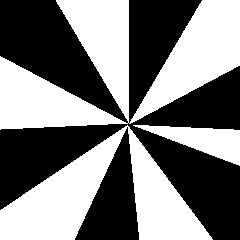jarnoh@komplex.org
proof-of-concept level midlet showing a graphical effect with hardcore size optimization: 937 bytes as MIDP 2.0 ready-to-run JAR application. I know, I'm bending the rules quite a bit here...
In my earlier experiments, I had figured that basic demo effect would need something like 1400 bytes to be properly executed in MIDP environment. This sounded like a lot to me, so this is my attempt to break down some MIDP size barriers. Long story short, some techniques used:
Needless to say, it doesn't even contain exit! On nokia series 40 devices, hold down that red button to kill midlet. And if you manage to optimize this further, I'm all ears...

// Decompiled by Jad v1.5.8f. Copyright 2001 Pavel Kouznetsov.
// Jad home page: http://www.kpdus.com/jad.html
// Decompiler options: packimports(3) annotate
import javax.microedition.midlet.MIDlet;
public class a extends MIDlet
{
public a()
{
// 0 0:aload_0
// 1 1:invokespecial #4
// 2 4:return
}
public void startApp()
{
new b(this);
// 0 0:new #2
// 1 3:aload_0
// 2 4:invokespecial #5
// 3 7:return
}
}
// Decompiled by Jad v1.5.8f. Copyright 2001 Pavel Kouznetsov.
// Jad home page: http://www.kpdus.com/jad.html
// Decompiler options: packimports(3) annotate
import javax.microedition.lcdui.*;
public final class b extends Canvas
{
public b(a a1)
{
// 0 0:aload_0
// 1 1:invokespecial #6
Display.getDisplay(a1).setCurrent(this);
// 2 4:aload_1
// 3 5:invokestatic #8
// 4 8:aload_0
// 5 9:invokevirtual #12
do
{
repaint();
// 6 12:aload_0
// 7 13:invokevirtual #9
serviceRepaints();
// 8 16:aload_0
// 9 17:invokevirtual #10
} while(true);
// 10 20:goto 12
}
public final void paint(Graphics g)
{
g.setColor(-1 * (a & 1));
// 0 0:aload_1
// 1 1:iconst_m1
// 2 2:getstatic #5
// 3 5:iconst_1
// 4 6:iand
// 5 7:imul
// 6 8:invokevirtual #11
g.fillArc(-128, -128, 512, 512, a += 31, 32);
// 7 11:aload_1
// 8 12:bipush -128
// 9 14:bipush -128
// 10 16:sipush 512
// 11 19:sipush 512
// 12 22:getstatic #5
// 13 25:bipush 31
// 14 27:iadd
// 15 28:dup
// 16 29:putstatic #5
// 17 32:bipush 32
// 18 34:invokevirtual #7
// 19 37:return
}
public static int a;
}